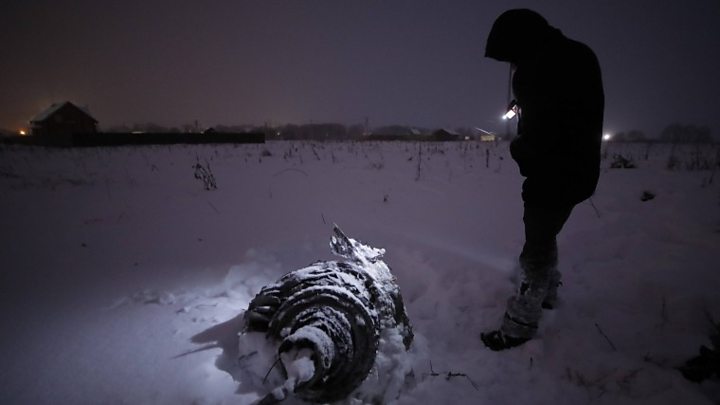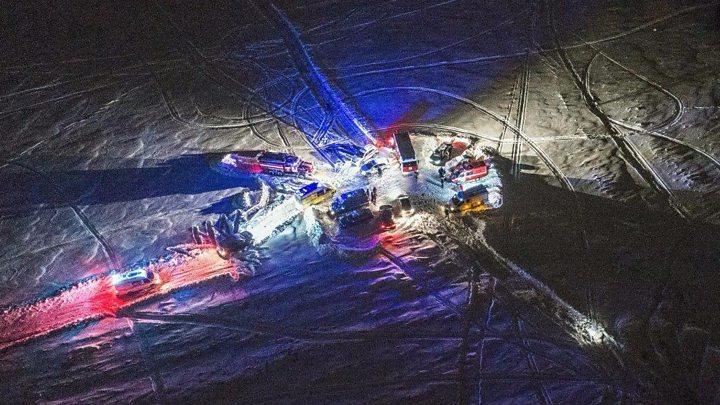President Trump is remaking the Republican economic playbook in his own image, abandoning ideological consistency in favor of a debt-busting strategy that will upend how Washington taxes and spends trillions of dollars each year.
On Monday, Trump is slated to announce a new budget plan that will no longer seek to eliminate the deficit over the next decade, forfeiting a major Republican goal, according to three people familiar with the document. The plan will call for a range of spending cuts that reduce the growth of the deficit by $3 trillion over 10 years, but it will not attempt to balance the federal budget, said the people, who spoke on the condition of anonymity to discuss the proposal before its official release.
The decision to relinquish the deficit goal comes after Trump pushed a $1.5 trillion tax cut through Congress late last year and signed a two-year budget deal last week that lifts federal spending limits by $500 billion, suspends for one year the ceiling on the national debt and is expected to lead to $1 trillion annual budget deficits.
The Republican turnaround on economic policy stands in sharp contrast to the party’s opposition to President Barack Obama’s stimulus program during the Great Recession. At that time, Rep. Paul D. Ryan (R-Wis.), now the speaker of the House, warned of a “debt crisis” and said that “spending is the problem.” Trump’s budget director, Mick Mulvaney, then a congressman from South Carolina, derided Obama’s spending plans as a “joke” and backed a constitutional amendment requiring a balanced budget.
Now, GOP leaders are largely silent on the two issues that had preoccupied them for the past decade — total spending and the growth of federal entitlements — while Trump has signed legislation that will lavish cash upon both defense and domestic programs far beyond what he had earlier proposed.
On Sunday, amid a backlash from conservative groups, Mulvaney defended the decision, while acknowledging that ballooning deficits are “a very dangerous idea” and that he wouldn’t have voted for the legislation if he were still in Congress. In an interview on CBS’s “Face the Nation,” he said that his job now is “to get the president’s agenda passed,” which included Pentagon funding that Democrats would allow only if the administration accepted big domestic spending increases.
On the same show, Rep. Mark Meadows (R-N.C.), the leader of the conservative House Freedom Caucus, said the bargain was unacceptable. “The swamp won,” he said. “And the American taxpayer lost.”
A month and a half before signing the spending legislation, Trump demonstrated similar ideological flexibility with his tax cut, shelving his campaign promise to focus on the “forgotten men and women” and signing a bill whose biggest benefits flow to corporations and the wealthy.
As Trump turns next to plans to rebuild the nation’s infrastructure and overhaul U.S. trade policy, his disregard for the traditional Republican economic catechism will again be on display Monday with the release of his detailed spending plan.
One of the biggest flash points is likely to be his decision to no longer aim to balance the budget over 10 years. That had been a North Star for the Republican Party for several decades, and GOP lawmakers took the government to the brink of default in 2011 when they demanded a vote on an amendment to the Constitution that would prohibit the government from spending more than it takes in.
In 2017, Trump’s budget proposal sought to eliminate the budget deficit over 10 years, although his budget writers were ridiculed for what some alleged was a $2 trillion math error.
It could not be learned how large the White House projects the deficit will be after 10 years, the normal window for an administration’s budget. But the White House is expected to project that the economy will grow at a much stronger clip than many economists think will occur. That means the deficit may be still larger than the White House predicts.
“This is Trump’s party right now,” Sen. Jeff Flake (R-Ariz.), a frequent critic of the president, said in a phone interview. “Everybody who’s running for reelection will tell you that. It’s primary season, and there just isn’t much talk about fiscal issues.”
To some degree, the president and his congressional allies are harking back to the policies of a free-spending, tax-cutting predecessor Trump has long maligned — George W. Bush.
But Bush cut taxes and ramped up spending when the United States had generated small budget surpluses for two consecutive years and the federal debt was less than half its current size, compared with the overall economy.
Trump’s tax and spending plan will shower the economy with hundreds of billions of additional dollars in coming years, which is expected to spur growth but risks a cycle of rising prices. Financial markets have been selling off, in part, because of inflation fears.
“The economy appears to be on the verge of overheating and arguably needs less, not more, stimulus,” economist Jim O’Sullivan of High Frequency Economics said in a research note Friday.
A mixture of political self-interest and presidential influence explains the GOP’s abrupt about-face. Congressional Republicans were in a “panic mode” before the passage of the tax cut, the administration’s sole major legislative accomplishment last year, according to a veteran Republican strategist who advises the White House and spoke on the condition of anonymity to provide a candid assessment.
“Our party was starting to freak out about whether they’d survive in November,” the strategist said.
The budget accord eliminated political headaches, such as recurring government shutdowns or fights over raising the debt ceiling, and contributed to an image of Republicans in Washington governing effectively, the strategist added.
But the main explanation for the Republican makeover is the man in the Oval Office.
Trump, who proclaimed “I love debt” in a 2016 interview, showed little concern about relying on heavy borrowing in his business career. Between 1991 and 2009, six of his businesses filed for bankruptcy, and by the late 1990s, major New York banks no longer would lend him money. A political chameleon who has shifted between the two parties numerous times, Trump has never embraced the sort of austerity favored by budget cutters such as Ryan.
“The president has enormous influence, and he’s not an orthodox Republican,” said Douglas Holtz-Eakin, an economist who advised the 2008 presidential campaign of Sen. John McCain (R-Ariz.). “It does limit what’s feasible to get done. The president has the pen. That’s the reality.”
The deficit also has faded as an issue of public concern. In a January poll by the nonpartisan Kaiser Family Foundation, 17 percent of voters said the budget deficit was “the most important issue.” That included only 14 percent of self-identified Republicans, less than the 17 percent of Democrats who said the deficit was the top priority.
In comparison, a combined 29 percent of voters in March 2011 told Bloomberg that the deficit was their top issue.
In a tweet, the president blamed a shortage of Republicans in the Republican-controlled Congress for the spending binge.
“Without more Republicans in Congress, we were forced to increase spending on things we do not like or want in order to finally, after many years of depletion, take care of our Military,” he tweeted. “Sadly, we needed some Dem votes for passage. Must elect more Republicans in 2018 Election!”
Sen. Rand Paul (R-Ky.) waged a lonely one-man delaying action Thursday night, criticizing his GOP colleagues for their spendthrift ways.
“When the Democrats are in power, Republicans appear to be the conservative party. But when Republicans are in power, it seems there is no conservative party,” Paul said in a speech that led to a brief government shutdown. “The hypocrisy hangs in the air and chokes anyone with a sense of decency or intellectual honesty.”
The budget accord represents an emphatic end to a Republican era dominated by the anti-spending tea party. That grass-roots group reached its zenith in 2011 when congressional Republicans forced Obama to agree to the Budget Control Act, which established spending caps on defense and nondefense spending as the price for averting a default on government debt.
The $1 trillion annual deficits will act as rocket fuel on an economy that already is running hotter than the Federal Reserve says is sustainable. The danger is that adding demand to the economy, at a time when unemployment is low, will push wages and then prices higher and higher.
Such an inflationary spiral would force the Federal Reserve to raise interest rates to cool off the economy, which would make Washington’s spending problem even worse by increasing the interest bill on the national debt.
It also threatens to leave the United States unable to respond adequately to a recession.
Even before the latest congressional actions, deficits by 2027 were projected to drive the national debt to its highest mark, relative to the size of the economy, since 1947, according to the Congressional Budget Office.
The Fed, led by new chairman Jerome H. Powell, was already expected to act this year to slow an economic expansion that — at almost nine years old — is the third-longest since 1854.
Central bank officials are expected to increase interest rates three times this year while simultaneously selling off some of the trillions of dollars of Treasury bonds the Fed bought during the financial crisis to keep rates low.
That maneuver, effectively reversing the extraordinary pump-priming known as “quantitative easing,” which was used to repair the economy after the housing crash, has never been done before. Some analysts say that the delicate exercise could shake asset prices across global stock and bond markets.
“You have to say that . . . Powell has his work cut out for him,” said Greg Valliere, chief global strategist for Horizon Investments. “I would not be surprised to see friction develop between Trump and Powell. Trump may get tired of seeing the Fed raise rates.”
Even before Congress passed the budget-busting measure, Wall Street analysts upgraded their economic forecasts to take account of the added stimulus. Higher government spending could add up to 0.5 percentage points to this year’s growth rate, pushing the annual figure to 2.8 percent, according to O’Sullivan, of High Frequency Economics.
By the end of next year, the unemployment rate could fall to 3.2 percent, its lowest level since 1953, said Michael Feroli, chief U.S. economist at JPMorgan.
Holtz-Eakin said that faster growth requiring a stronger Fed response would be a good thing after nearly a decade of slow recovery from the 2007-2009 recession. It’s easier for the Fed to cool off an overheating economy by making capital more costly than it is to revive one that has stalled, he said.
“They were already going to raise rates,” he said. “If they have to raise them more, people should be willing to take that kind of upside risk.”

